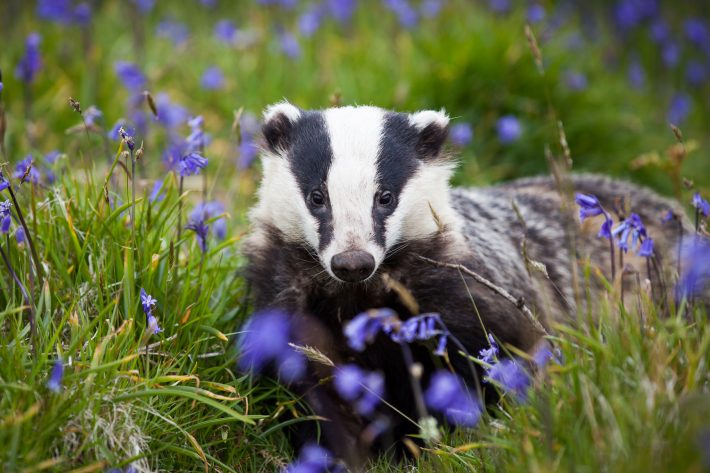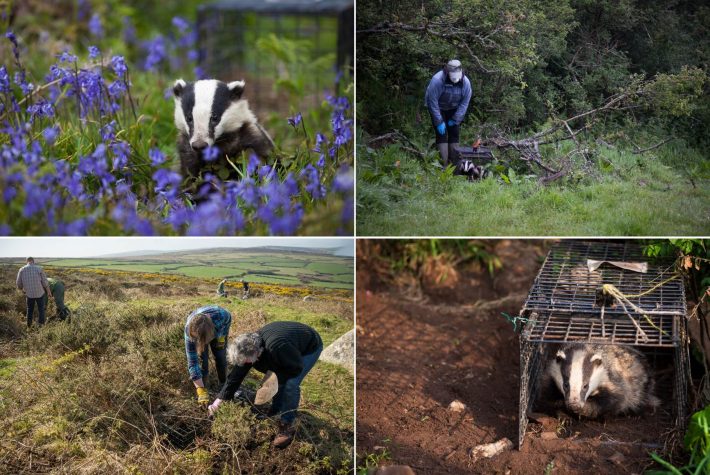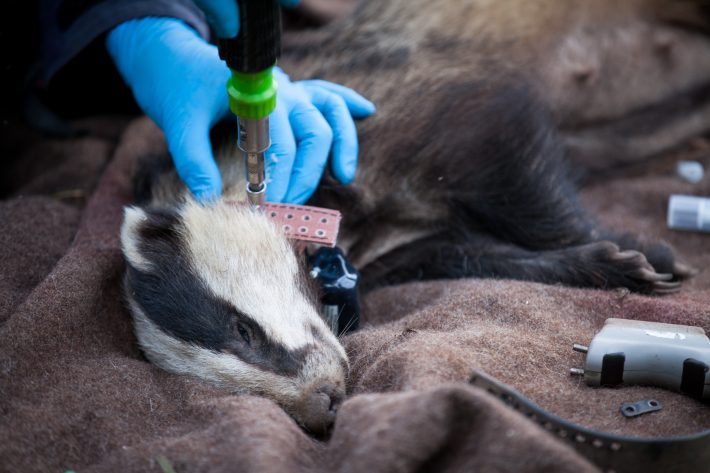Vaccinating badgers against TB does not change their behaviour
Rosie Woodroffe discusses the vaccination of badgers against TB and her new publication in Journal of Applied Ecology.

Badgergeddon! That’s how one of Britain’s national newspapers described the ongoing cull of badgers, intended to curb the spread of bovine tuberculosis (TB) to cattle.
The culls are highly controversial. Farmers clamour for decisive action to control a disease which causes them economic hardship and mental stress. Scientists point out that only a fraction of herds catch TB from badgers, and that culling badgers spreads the disease to new areas. Leading vets warn that shot badgers suffer unacceptably before they die. Wars of words turn into direct action. Marksmen seek to kill as many badgers as possible, while protestors try to stop them, crushing cage traps with mallets and scaring badgers away with bright lights.
Badger vaccination should be a more promising approach. Government trials suggest that badger vaccination could curb TB transmission: badgers which have been vaccinated are less likely to subsequently test positive for TB, as are unvaccinated cubs in the same group. Because vaccination is more publicly acceptable than culling, it is also cheaper, as there is no need for expensive policing. Better still, wildlife enthusiasts are willing to help vaccinate badgers on a voluntary basis, further reducing the costs, and building cooperation instead of conflict in rural communities. And yet, farming leaders remain intensely suspicious of badger vaccination as a TB control tool.
Media reports fuel this suspicion with unsubstantiated claims that vaccination is a “catastrophic failure” which “may add to the spread of TB”. These claims originate with a single vet, who speculated that vaccination might cause badgers to range more widely, increasing the spread of infection to cattle. This suggestion was completely hypothetical: in fact nobody has mapped badger movements in the area where such effects were claimed.
Why have such concerns arisen? Probably because badger culling DOES change the behaviour of surviving badgers, in just the way claimed for vaccination. Where badgers are undisturbed, social groups defend territories from which they aggressively exclude other badgers – a behaviour which reduces disease spread from group to group. Culling changes all that. Dead badgers don’t defend territories, and so surviving badgers move in to occupy the vacated space, bringing TB with them and spreading it to new animals and new areas.

Is it possible for badger vaccination to have the same effect? Vaccination does not remove badgers permanently, but it does confine them to a trap for a night, interfering briefly with their normal territorial behaviour. Might this brief disturbance alter their behaviour, or that of their neighbours, helping to spread TB? Our new research suggests that it does not. As part of a long-term study, we fitted GPS-tracking collars to 54 badgers within four TB-affected areas of Cornwall. We found that these animals were no more likely to trespass in neighbours’ territories on nights when some of those neighbours were confined to traps, than on nights without trapping. Perhaps not surprisingly, we did record much more trespassing during the mating season.
Might the vaccine itself alter badger behaviour? Researchers have suggested that TB-affected badgers may range more widely than those which are not infected. As the vaccine is essentially a mild form of TB bacteria, could it change badger behaviour in a similar way? Again, our new research suggests not. Of our 54 GPS-collared badgers, 15 (at two of the sites) were vaccinated at least once in the course of the study. These vaccinated badgers had ranging behaviour indistinguishable from that of unvaccinated badgers (if there was a difference, it was too small for us to detect, but was significantly smaller than the change prompted by culling, which increased badger range sizes by 180% for large-scale culls, and 74% for small-scale culls).

Our findings should help to dispel fears that badger vaccination might – like culling – have harmful consequences. Combined with evidence that vaccination reduces badger infections, it suggests that this approach might help to reduce new TB infections, with potential benefits for cattle TB control. Indeed, the Achilles heel of culling – badger social behaviour – actually makes vaccination more promising, because badger territoriality and vaccination work together to reduce the probability that an infected badger will interact with badgers which can become infected.
Controlling TB is a huge and exhausting challenge, and it is perhaps unsurprising that farmers would be wary of new approaches. Hopefully our findings should help to allay some of their fears. What is now needed is a proper trial to establish whether badger vaccination can reduce TB prevalence in both badgers and cattle.
“Ranging behaviour of badgers Meles meles vaccinated with Bacillus Calmette Guerin” was published in the Journal of Applied Ecology on 9 Dec 2016 and can be accessed at http://onlinelibrary.wiley.com/doi/10.1111/1365-2664.12837/full.
This post has also been published on the ZSL and The Applied Ecologist’s blog websites.
The views expressed in posts on this blog are personal to the author and are not necessarily shared by the British Ecological Society or any other person or entity involved in creating, producing or delivering it and no such party shall be held liable for any statements made or content posted.
For media enquiries about this blog post, please contact the BES Press Officer.
Like what we stand for?
Support our mission and help develop the next generation of ecologists by donating to the British Ecological Society.